How a History classroom conquered COVID
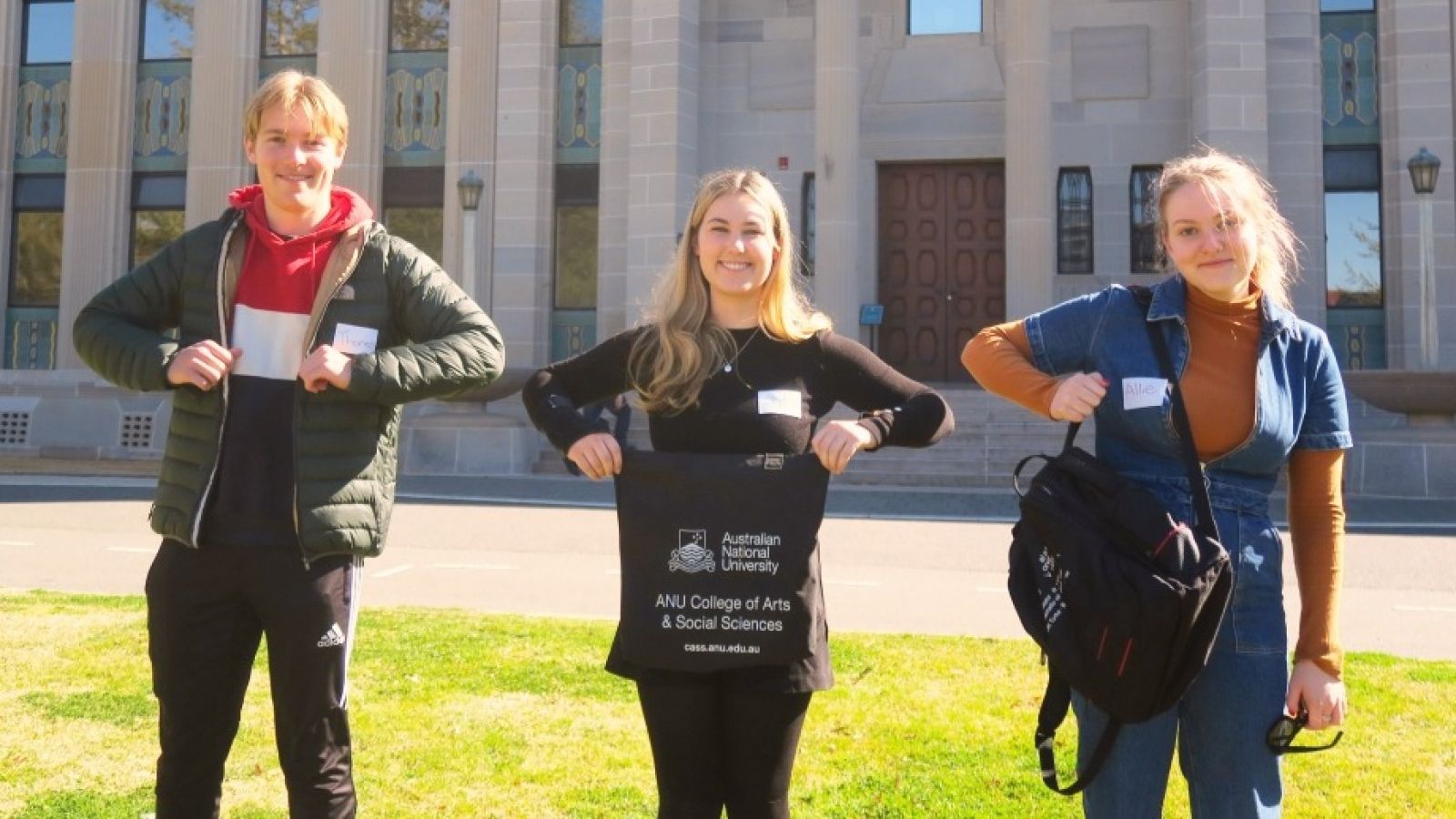
“Meeting in the open air”: Thomas Williams, Sophie Willis and Allie Kelly touch elbows in their first open-air meeting for the year. Social interaction is an invaluable part of effective learning.
The onset of the COVID pandemic created a crisis in higher education. Classes across the world were suspended as teachers scrambled to deliver content online and, in some universities, education became an entirely virtual experience. But not at the ANU. 'War and Society', offered by the School of History and convened by Professor Bruce Scates, was just one of several courses that opted for hybrid delivery. Online content was enlivened by segments of film, interactive class quizzes, a French film night and digital content from the One Hundred Stories website. And on several occasions the class met in the open air, examining artefacts, touring museums and exploring the commemorative precinct of ANZAC Parade in Canberra.
“Our first face-to-face class came in the first week of semester”, Sarah explains. “As a second-year student, I value these opportunities to actually engage with my teacher and fellow students”. Working with three of her peers, Sarah explained the significance of a canteen abandoned by an Australian soldier on the northernmost extremes of the Gallipoli battlefields. “It was presented to a study tour by a Turkish historian, and repatriated to Australia with the permission of the authorities.” It told, she said, the story of a “savage and pointless campaign”. Once it had been part of the material of war, now it’s viewed as a symbol of reconciliation.
Sophie’s most vivid memory of the class is the testimony of nurses commemorated by the Australian Army Nursing Service Memorial. “I never realised how contested memorial spaces were”, she said. “One nurse, who had served in the Pacific and lost her closest friend on Banka Island, described the memorial as just a big glass ‘shower screen’ and wished the nurses could have a simple white cross instead. But others in the surveys we read loved the memorial, the flowing water, the curving walls, and the words of the nurses themselves embossed in the glass. Presenting so many different points of view to the class was a real challenge.”
For Alex, the biggest challenge of the class was working through repatriation files recently digitised by the National Archives. “They told us the other side of war, not about the battles but about what happened to men and women when they returned.” “Meeting together and working through the files helped me to understand each veteran’s medical conditions and see how poorly they’d been treated in a ‘Land Fit for Heroes’. I’ve volunteered to help the Archives digitise more of these records, they were just amazing”.
Jimmy was delighted when the class ended their tour of Anzac Parade at the foot of the Kemal Atatürk Memorial. “I’ve been fascinated by the complex, state-defining figure of Atatürk ever since travelling through Turkey in the pre-covid world. So I was pleasantly surprised to have the opportunity to present his life to the class. We talked about Gallipoli remaining a contested site long after the fighting had ended. A sacred place, held at the mercy of Australian, New Zealander, and Turkish post-war foreign policy. That said, we tend to forget the tens of thousands of other soldiers from across the Ottoman and British Empires whose remains are buried there; making the questions of ownership surrounding the Peninsula harder to answer”.
Professor Bruce Scates described the class as one of the most committed and engaged group of students it had been his privilege to teach. “It reminded me of what a valuable learning environment we have here at the ANU, with small classes able to interact with their teachers. Not even a pandemic stemmed their determination to learn.”
In 2021 (COVID permitting) Professor Scates will lead a study tour of commemorative sites across Australia and Aotearoa/New Zealand. “I hope it will prove an antidote to months of COVID confinement. And allow our students to engage with each other and the world.”
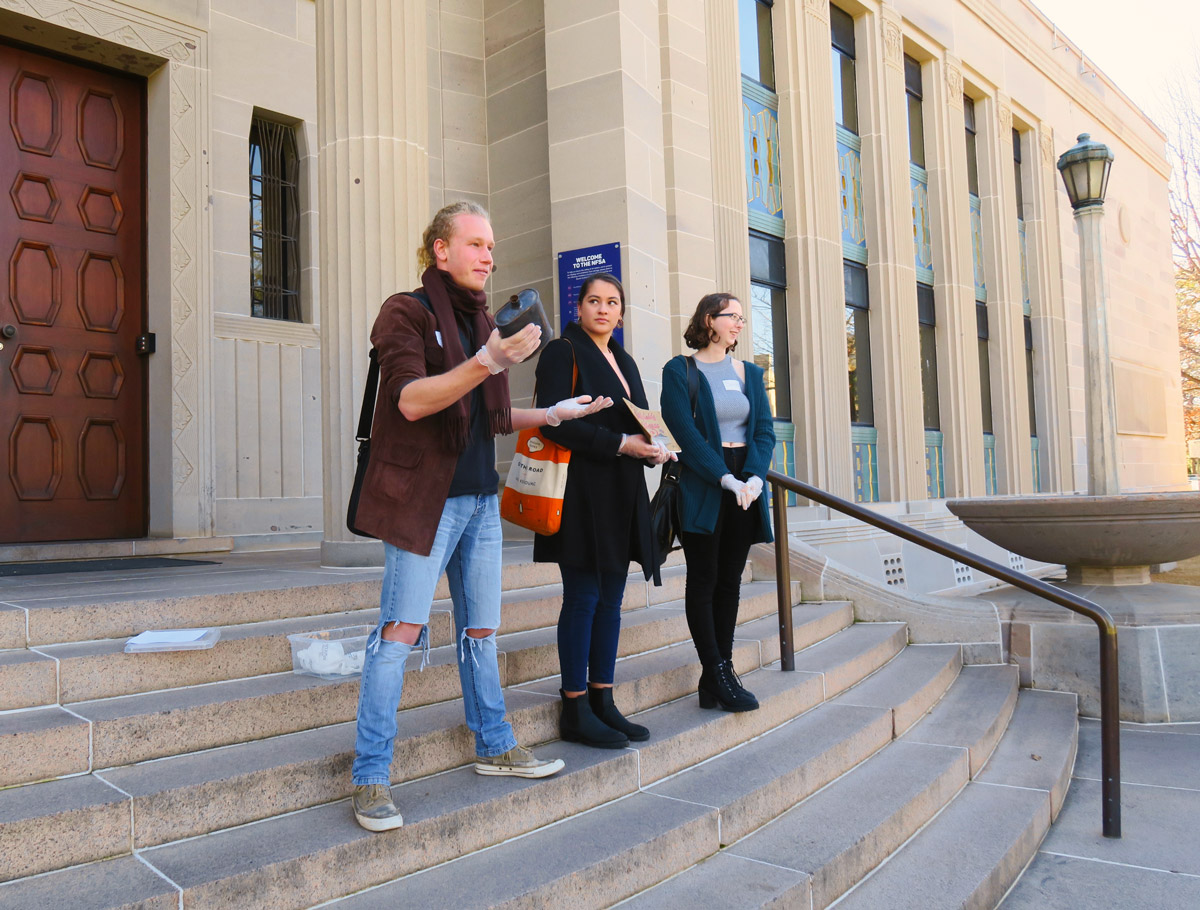
"Examining artefacts": Jimmy Freeman, Kelly Evans and Sarah Banning explain how objects like a water bottle can embody the story of war. Artefacts were sanitised before their distribution in class and gloves were worn for all the presentations.
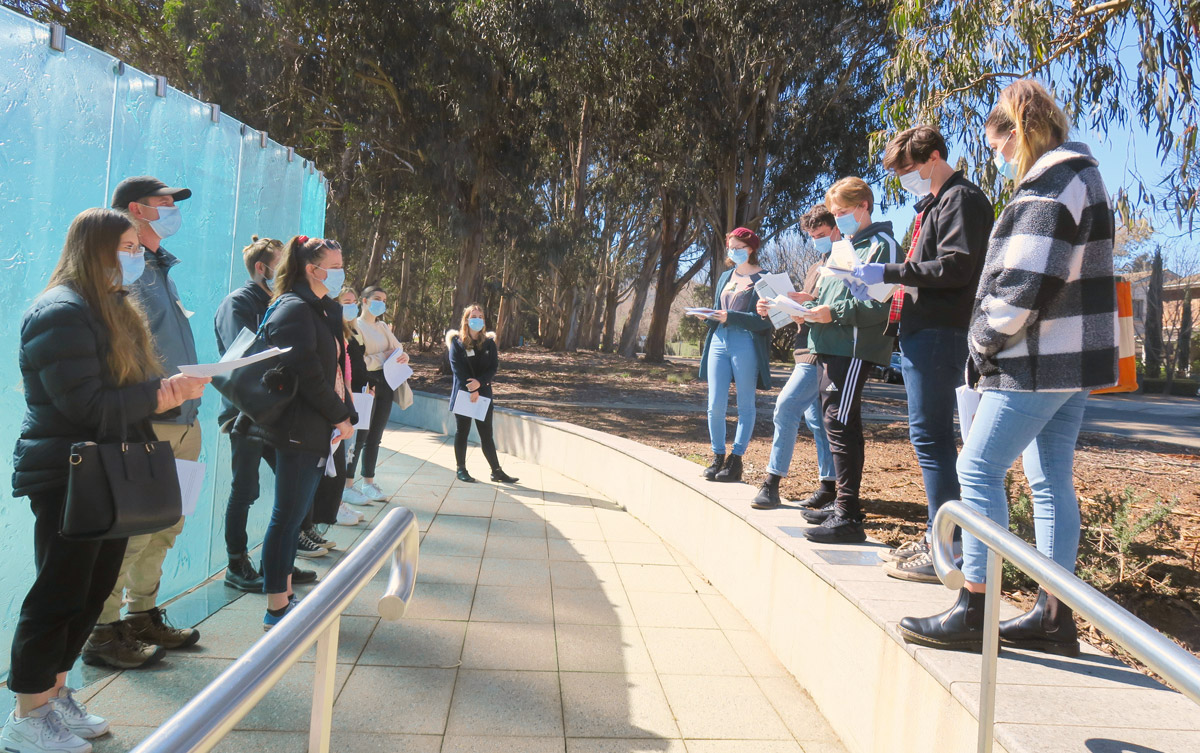
"So many different points of view": Sophie Willis (centre) watches on, as her peers examine responses to the Nurses’ Memorial on Anzac Parade. The excursion took place during a spike in Corona cases in NSW, and masks were issued to students as an additional precaution.
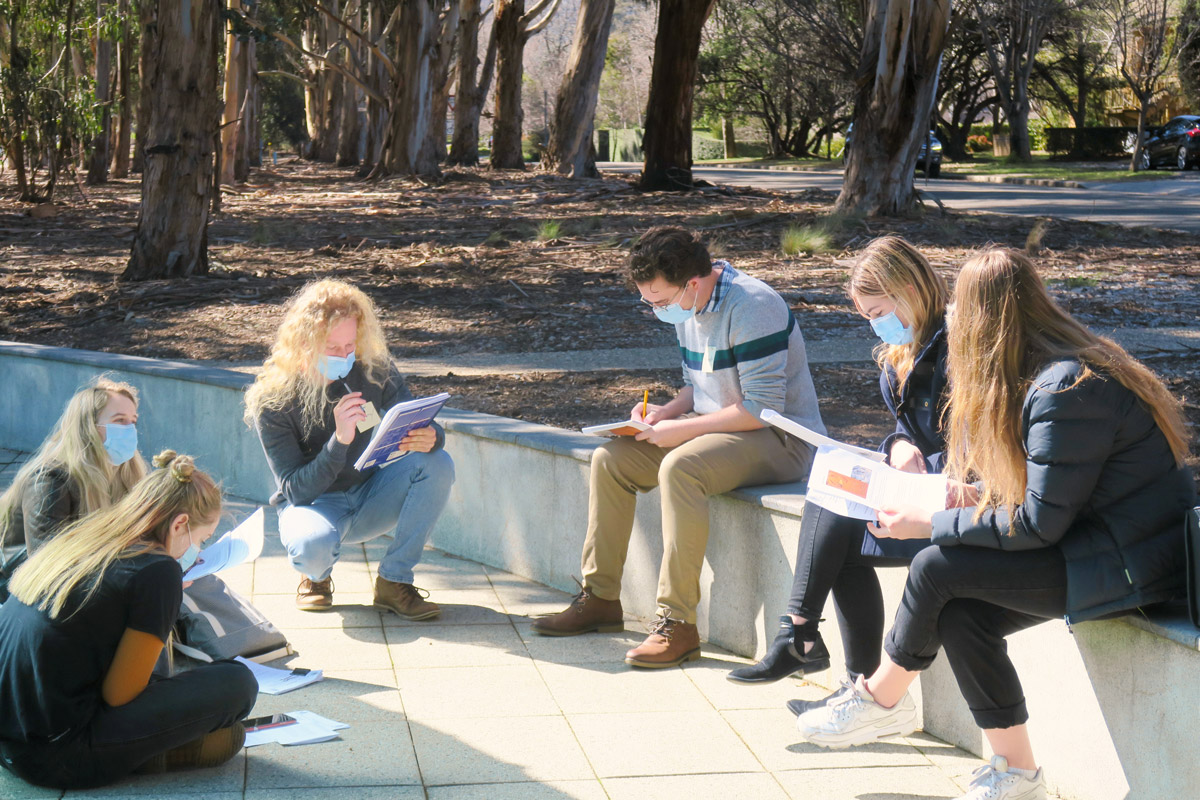
"Working through the files": Alexander Buckman (seated) examines extracts from primary sources, pooling ideas for a group presentation. Effective learning involves collaboration—individual and collective effort combined.
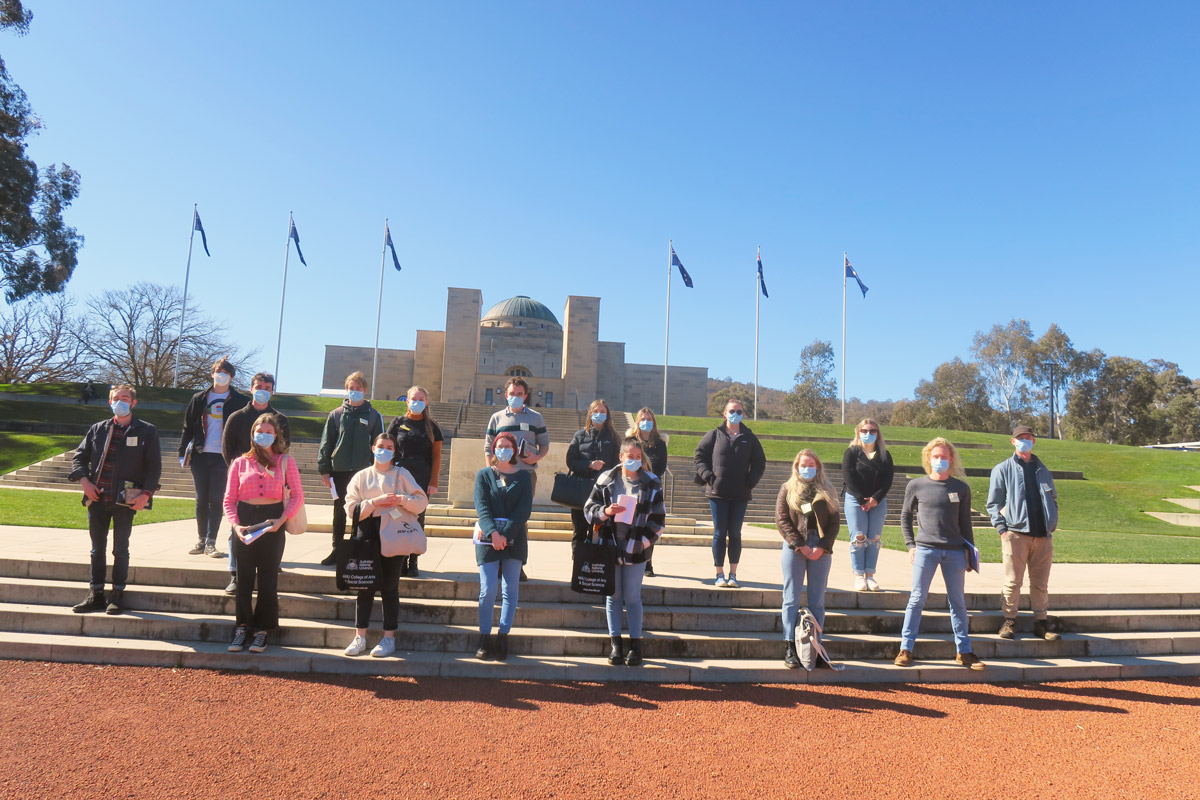
"Determined to learn": ANU students from 2020 gather at the foot of the Australian War Memorial for a class portrait. After groupwork in the open air, students worked through individual worksheets in the Memorial galleries. Engagement with Canberra’s major cultural institutions is another important feature of teaching at ANU.